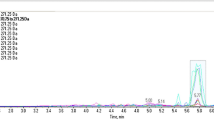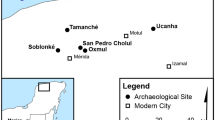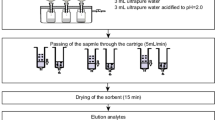Abstract
METHODS of analysis of opium1 and major opium alkaloids are required in determining the place of origin in those areas of the world where illicit traffic in opium arises. The Economic and Social Council of the United Nations in 1949 authorized research into devising chemical methods of identifying opium and invited member governments to participate in such a programme. Under this International Narcotics Research programme, Canada offered to train scientists from governments of other countries. This note is a publication of research results obtained by a U.N.T.A.A. fellow (L. K. T.) under this programme2 and reports a new method of separating papaverine and narcotine.
This is a preview of subscription content, access via your institution
Access options
Subscribe to this journal
Receive 51 print issues and online access
$199.00 per year
only $3.90 per issue
Buy this article
- Purchase on Springer Link
- Instant access to full article PDF
Prices may be subject to local taxes which are calculated during checkout
Similar content being viewed by others
References
Bartlet, J. C., and Farmilo, C. G., Nature, 174, 407 (1954).
United Nations Document E/CN 7/327—Add. 1 ( May 7, 1957).
Anneler, E., Arch. Pharm., 258, 130 (1920).
Fulton, C., U.N. Document ST/SOA/Ser. K/34 (Sept. 14, 1954).
Author information
Authors and Affiliations
Rights and permissions
About this article
Cite this article
KUM TATT, L., FARMILO, C. Determination of Papaverine and Narcotine by using Ammonium Reineckate. Nature 180, 1288–1289 (1957). https://doi.org/10.1038/1801288a0
Issue Date:
DOI: https://doi.org/10.1038/1801288a0
This article is cited by
-
Quantitative Isolation of Alkaloids from Plant Materials
Nature (1960)
Comments
By submitting a comment you agree to abide by our Terms and Community Guidelines. If you find something abusive or that does not comply with our terms or guidelines please flag it as inappropriate.



